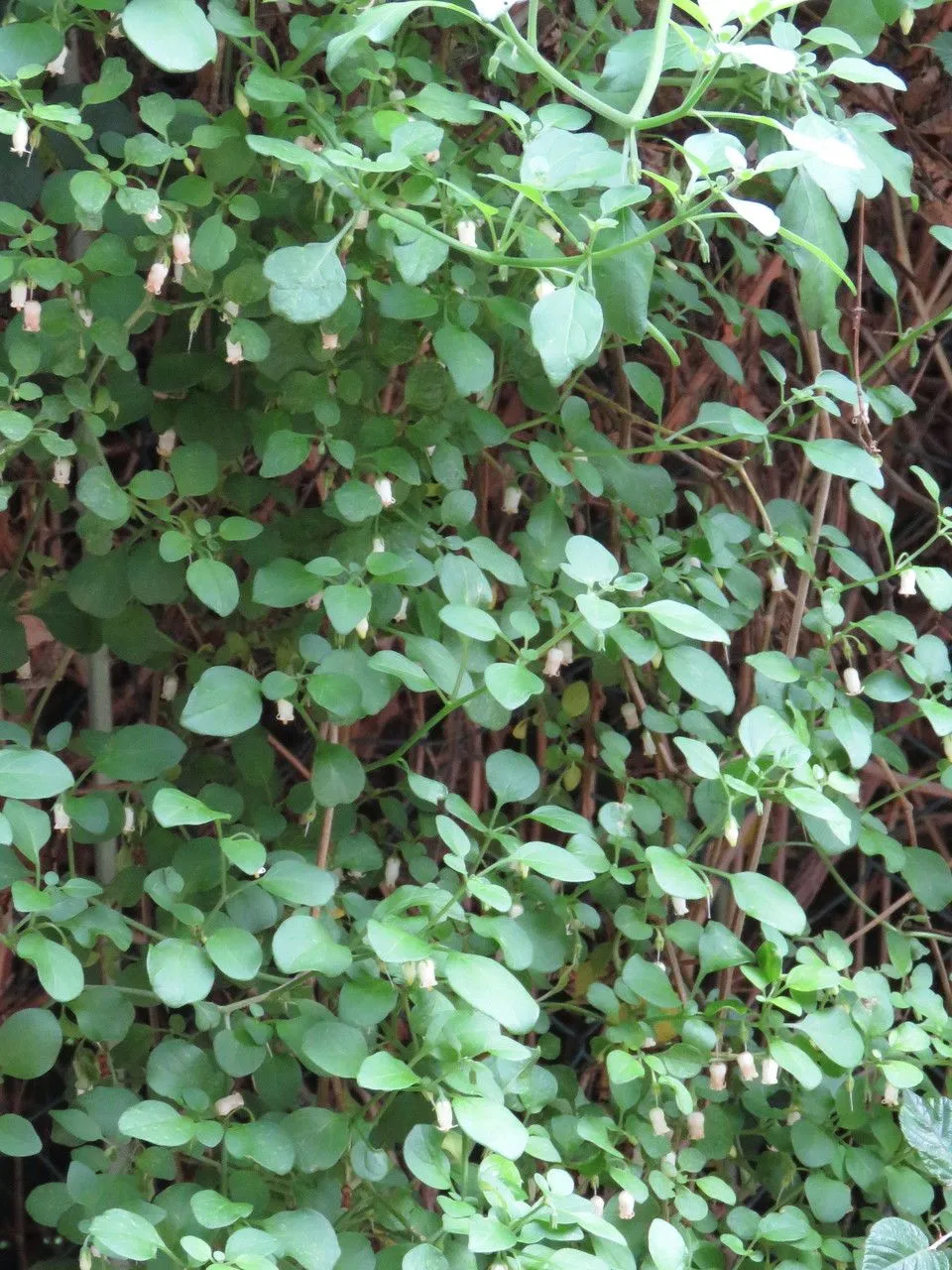
Author: (Lam.) Baill.
Bibliography: Hist. Pl. 9: 288 (1888)
Year: 1888
Status: accepted
Rank: species
Genus: Salpichroa
Vegetable: False
Observations: Peru to S. Brazil and S. South America
Lily of the valley vine, scientifically known as Salpichroa origanifolia, is a captivating perennial plant belonging to the Solanaceae family, which includes other well-known species such as tomatoes, potatoes, and eggplants. First documented in 1888 by the renowned botanist Henri Ernest Baillon, this species, initially classified by Jean-Baptiste Lamarck, has carved a unique niche in the botanical world.
This enchanting vine is native to a broad range of regions, extending from Peru in the north to southern Brazil and into various parts of southern South America. The climate and ecological conditions across these areas vary considerably, allowing Salpichroa origanifolia to exhibit a range of adaptations conducive to its survival and growth.
Lily of the valley vine is known for its delicate, bell-shaped flowers that bear a striking resemblance to the traditional lily of the valley, hence its common name. These flowers typically bloom in clusters and emit a sweet fragrance, making it a charming addition to gardens and natural landscapes. The flowers are usually white to pale green and are complemented by dark green, ovate leaves, which give the plant a lush and verdant appearance.
The plant’s habit of twining and spreading can create a verdant carpet over the ground or an elegant draping over supporting structures, which makes it not only appealing for ground cover solutions but also for ornamental purposes. Gardeners often appreciate its hardy nature and ability to thrive in diverse conditions, ranging from open fields to partially shaded woodlands.
Despite its beauty and versatility, it’s important to note that members of the Solanaceae family can sometimes be toxic if ingested, and this vine is no exception. Caution is advised, especially around pets and small children, to avoid accidental ingestion of its parts.
In summary, the Lily of the valley vine (Salpichroa origanifolia) is a graceful and versatile plant that has enchanted botanists and gardeners alike since its formal documentation in the late 19th century. Originating from varied regions of South America, it thrives in numerous environments and adds a touch of elegance with its fragrant, bell-shaped flowers and lush foliage.
Spa: huevito de gall
Eng: lily of the valley vine
Fra: muguet des pampas, oeuf de coq
En: Lily of the valley vine, Cock’s-eggs
Fr: Muguet des pampas, Oeuf de coq, Oeuf-de-coq
It: Salpicroa
Qu: Khani-khani
Es: Huevito de gall, Azucena de las pampas, Huevo de gallo, Cojón de gallo, Pacpacha
Cy: Addurnwy
Taken Oct 16, 2021 by Trap Hers (cc-by-sa)
Taken May 7, 2022 by Trap Hers (cc-by-sa)
Taken Oct 16, 2021 by Trap Hers (cc-by-sa)
Taken Jun 10, 2020 by hempireo (cc-by-sa)
Taken Jun 12, 2022 by Aster marasescu (cc-by-sa)
Taken Oct 20, 2015 by Tela Botanica − jean-marie PAGNIER (cc-by-sa)
Taken Apr 11, 2013 by Tela Botanica − Carre Jennifer (cc-by-sa)
Taken Mar 17, 2014 by Tela Botanica − Liliane Roubaudi (cc-by-sa)
Taken Apr 11, 2013 by Tela Botanica − Carre Jennifer (cc-by-sa)
Taken Feb 25, 2016 by Tela Botanica − Liliane ROUBAUDI (cc-by-sa)
Taken Sep 10, 2022 by Alex Gabriel Saravia (cc-by-sa)
Taken Jul 31, 2020 by Xamardo Miguel (cc-by-sa)
Taken Sep 21, 2022 by Jean-Francois Camboulas (cc-by-sa)
Taken Dec 10, 2021 by Hernan Hausch (cc-by-sa)
Taken Oct 1, 2022 by Daniel Mancinelli (cc-by-sa)
Taken Jun 20, 2019 by Heinz Gass (cc-by-sa)
Taken May 26, 2019 by Florent Beck (cc-by-sa)
Taken Jun 24, 2022 by José Moreira (cc-by-sa)
Taken Aug 29, 2018 by Alexandre Martin (cc-by-sa)
Taken Oct 28, 2018 by Michele Scotto (cc-by-sa)
Taken Apr 15, 2004 by Photoflora – Benoit BOCK (©)
Taken Apr 15, 2013 by Photoflora – Benoit BOCK (©)
Taken Apr 11, 2013 by Tela Botanica − Carre Jennifer (cc-by-sa)
Taken Apr 11, 2013 by Tela Botanica − Carre Jennifer (cc-by-sa)
Taken Apr 18, 2013 by Tela Botanica − Alexandre COMBE (cc-by-sa)
Taken Feb 28, 2021 by Monteiro Henrique (cc-by-sa)
Taken Mar 5, 2022 by Monteiro Henrique (cc-by-sa)
Taken Sep 2, 2021 by bismilla (cc-by-sa)
Taken Sep 7, 2017 by Thomas Michel (cc-by-sa)
Taken Feb 15, 2022 by Cristian Salinas (cc-by-sa)
© copyright of the Board of Trustees of the Royal Botanic Gardens, Kew.
Growth habit>: Vine, Forb/herb
Ph maximum: 7.5
Ph minimum: 7.0
Light: 8
Atmospheric humidity: 4
Soil nutriments: 6
Family: Myrtaceae Author: (F.Muell.) K.D.Hill & L.A.S.Johnson Bibliography: Telopea 6: 402 (1995) Year: 1995 Status:…
Family: Rubiaceae Author: Pierre ex A.Froehner Bibliography: Notizbl. Bot. Gart. Berlin-Dahlem 1: 237 (1897) Year:…
Family: Sapindaceae Author: Koidz. Bibliography: J. Coll. Sci. Imp. Univ. Tokyo 32(1): 38 (1911) Year:…
Family: Asteraceae Author: A.Gray Bibliography: Pacif. Railr. Rep.: 107 (1857) Year: 1857 Status: accepted Rank:…
Family: Fabaceae Author: Medik. Bibliography: Vorles. Churpfälz. Phys.-Ökon. Ges. 2: 398 (1787) Year: 1787 Status:…
Family: Aspleniaceae Author: (Cav.) Alston Bibliography: Bull. Misc. Inform. Kew 1932: 309 (1932) Year: 1932…